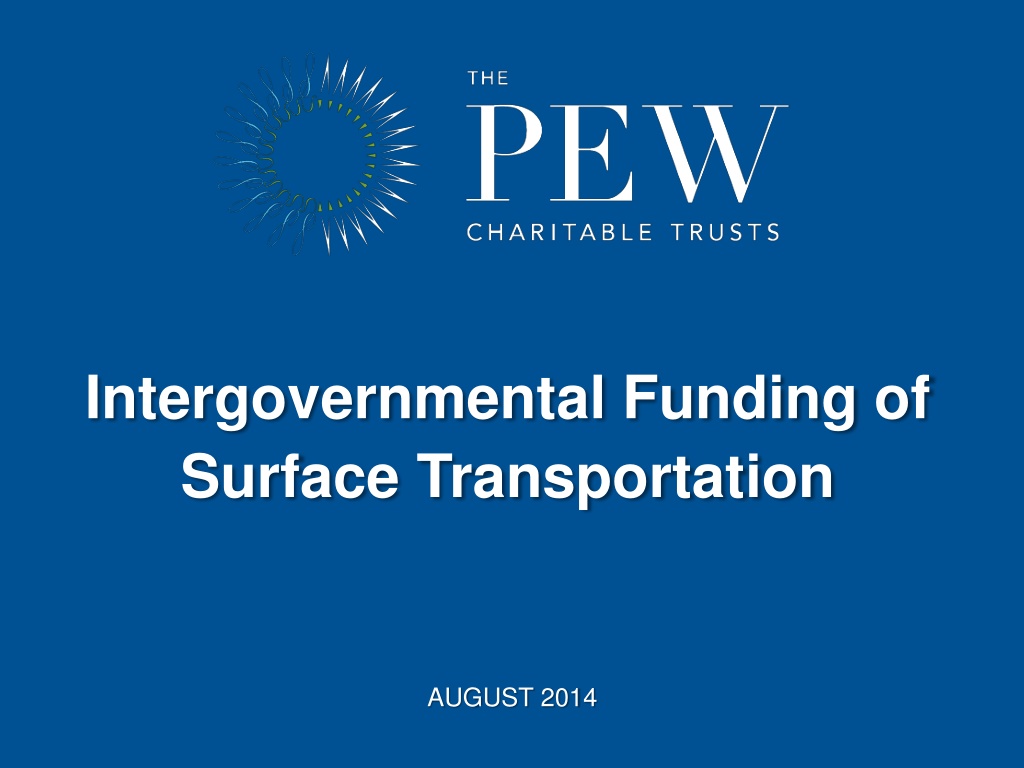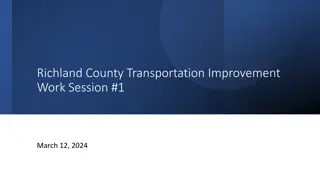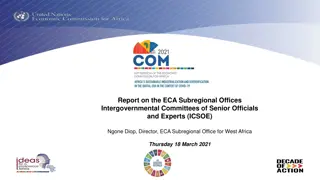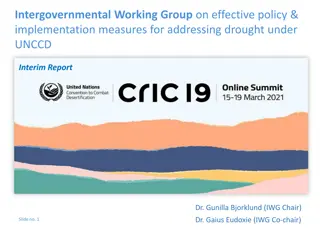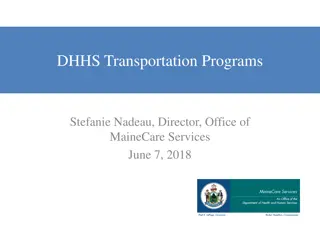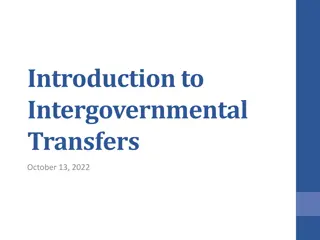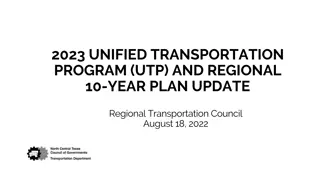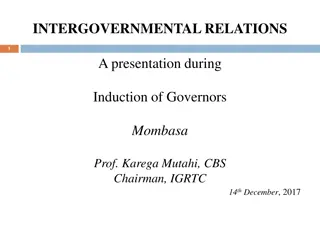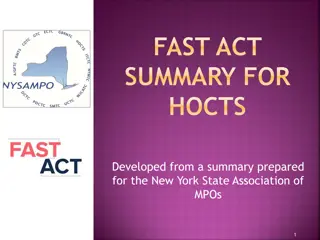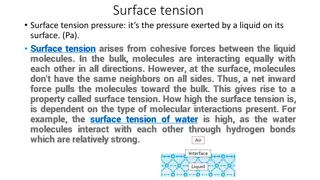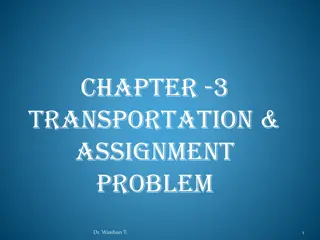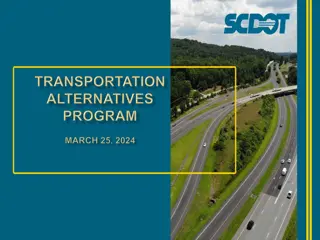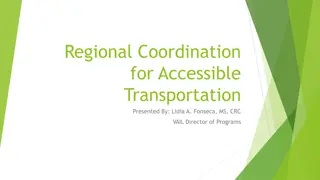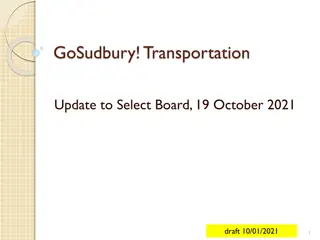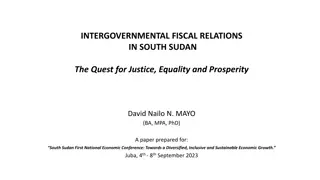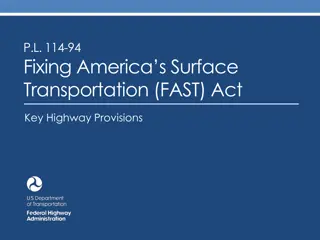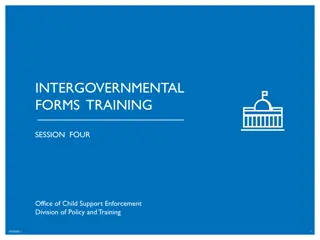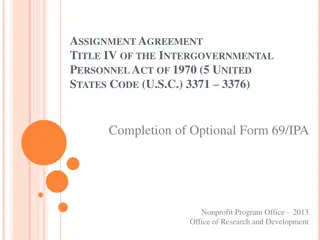Insights on Intergovernmental Funding of Surface Transportation
The interconnected nature of surface transportation funding system is highlighted, showing a decline in overall spending across federal, state, and local governments. Challenges in funding call for dialogue among all levels of government. The data reflects expenditures, funding sources, and the varying levels of federal involvement in transportation funding across different states. Notably, the Highway Trust Fund faces growing shortfalls, indicating a concerning trend in revenue and outlays. The infographic also illustrates the decline in federal and state highway and transit expenditures over the years, emphasizing the need for sustainable funding solutions.
Download Presentation

Please find below an Image/Link to download the presentation.
The content on the website is provided AS IS for your information and personal use only. It may not be sold, licensed, or shared on other websites without obtaining consent from the author. Download presentation by click this link. If you encounter any issues during the download, it is possible that the publisher has removed the file from their server.
E N D
Presentation Transcript
Intergovernmental Funding of Surface Transportation AUGUST 2014
Takeaways Surface transportation funding system is interconnected. Real overall spending has declined. Federal and state governments rely heavily on declining fuel tax revenues. Common funding challenges and interconnection call for dialogue across all levels of government.
All Levels of Government Fund Highway and Transit Own-source spending by level of government, 2007-11 annual average 25% 40% 36% Federal $51 billion State Local $82 billion $74 billion Source: Pew analysis of U.S. Census Bureau, 2007-2011 Annual Survey of State and Local Government Finances.
The Surface Transportation Funding System FY 2011 Expenditures $1 Billion Federal Government OWN SOURCE REVENUE $58 Billion $46 Billion $103 Billion State Government $80 Billion $23 Billion $11 Billion Local $107 Billion Government $73 Billion Direct spending on projects Intergovernmental transfers Own source flows Source: Pew analysis of U.S. Census Bureau, 2011 Annual Survey of State and Local Governments. Numbers may not add up due to rounding.
Size of Federal Role Within Each State Varies Federal share of total surface transportation expenditures, FY 2007-2011 Federal Share, National Average 24% Less than 22% 22% - 24% 25% - 29% 30% - 34% 35% or greater Note: Map does not include direct federal spending on transportation, which cannot be broken out by state. Source: Pew analysis of U.S. Census Bureau, 2007-2011 Annual Survey of State and Local Government Finances.
Highway Trust Fund Faces Growing Shortfalls Actual and projected revenue and outlays 70 60 Transfers from general fund Revenues Outlays End-of-year balance 50 Billions of dollars 40 30 20 10 0 Notes: Numbers are not adjusted for inflation. Source: Pew analysis of Congressional Budget Office and Federal Highway Administration data.
Federal and State Highway and Transit Expenditures are Falling Expenditures by level of government, inflation-adjusted $120 State $100 $100.2 $79.8 Billions of 2011 dollars $80 Local $73.0 $77.7 $60 $57.0 $59.3 Federal $43.6 $40 Recovery Act $20 $0 2002 2003 2004 2005 2006 2007 2008 2009 2010 2011 Notes: Inflation-adjusted using Bureau of Economic Analysis' price index for state and local government investment in structures (Table 3.9.4, Line 36). Years are in state fiscal years. Source: Pew analysis of U.S. Census Bureau, 2002-2011 Annual Survey of State and Local Government Finances.
Both Federal and State Governments Reliant on Fuel and Vehicle Taxes Funding resources used for highways by level of government, 2012 100% 7% 12% 13% 90% Bond proceeds 14% 80% 19% 18% Other taxes, fees, investment income, and other receipts Property taxes 13% 70% 6% 15% 60% 11% General fund 50% 21% 40% Tolls 66% 30% 47% Vehicle tax 20% 31% Fuel tax 10% 3% 4% 0% Federal State Local Note: Local vehicle tax revenue include a small amount of fuel tax revenue as well. Federal revenues are in federal fiscal years, state and local revenues are in their own fiscal years or calendar years, depending on how they report their data to FHWA. Source: Pew analysis of Federal Highway Administration 2012 data (Tables HF-10, SDF, and FE-210). Local data is estimated by FHWA.
Federal and State Governments Face Falling Fuel Tax Revenues Federal and state fuel tax revenues, inflation-adjusted 60 State 50 Federal Billions of 2012 dollars 40 30 20 10 0 2002 2003 2004 2005 2006 2007 2008 2009 2010 2011 2012 Note: Inflation-adjusted using Bureau of Economic Analysis' price index for state and local government investment in structures (Table 3.9.4, Line 36). Federal revenues are in federal fiscal years, state revenues are in state fiscal years (normally July-June) or calendar years, depending on how they report their data to FHWA. Source: Pew analysis of Federal Highway Administration data, Tables FE-210 and SDF.
Takeaways Surface transportation funding system is interconnected. Real overall spending has declined. Federal and state governments rely heavily on declining fuel tax revenues. Common funding challenges and interconnection call for dialogue across all levels of government.
Ethan Pollack epollack@pewtrusts.org pewstates.org/fiscal-federalism
